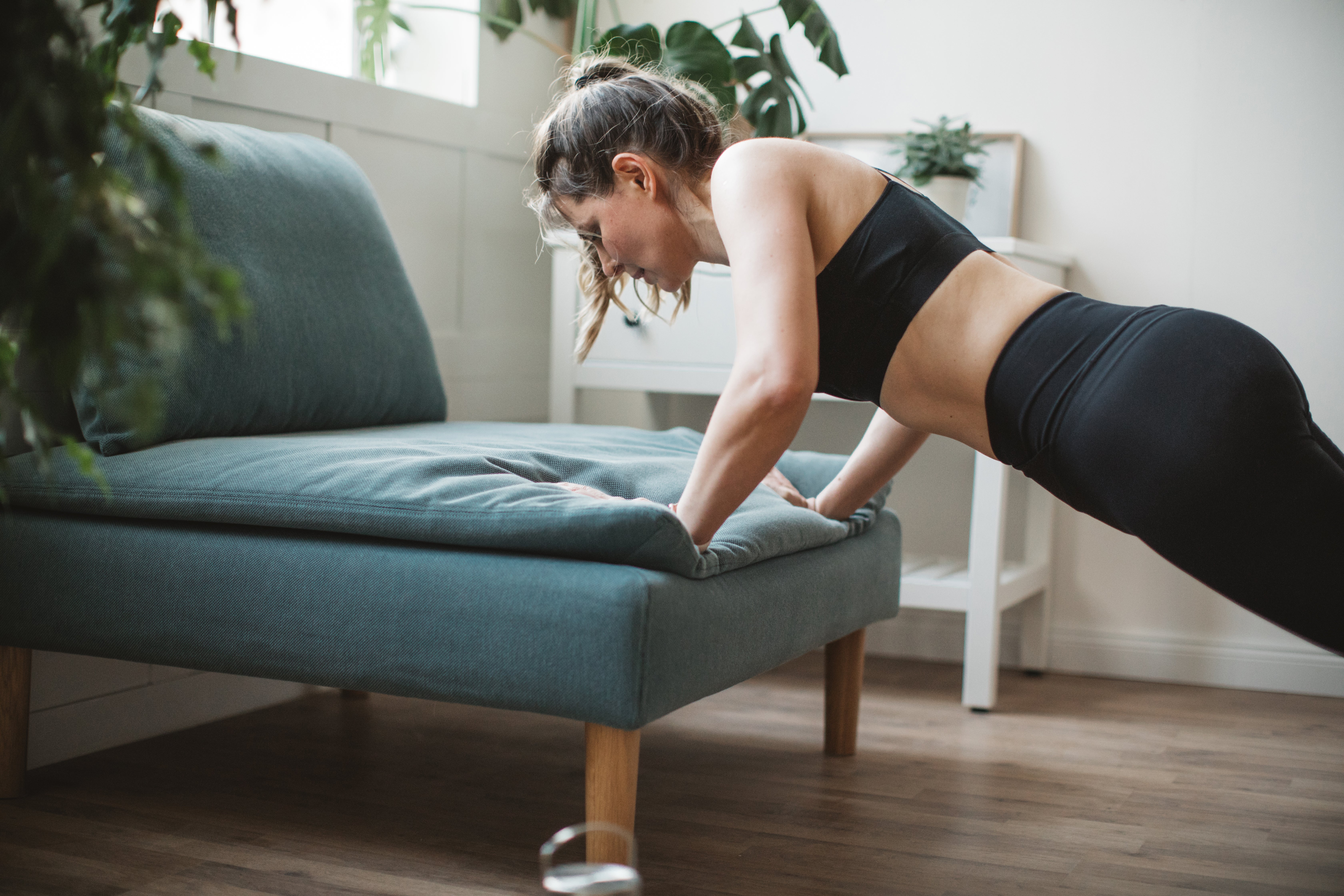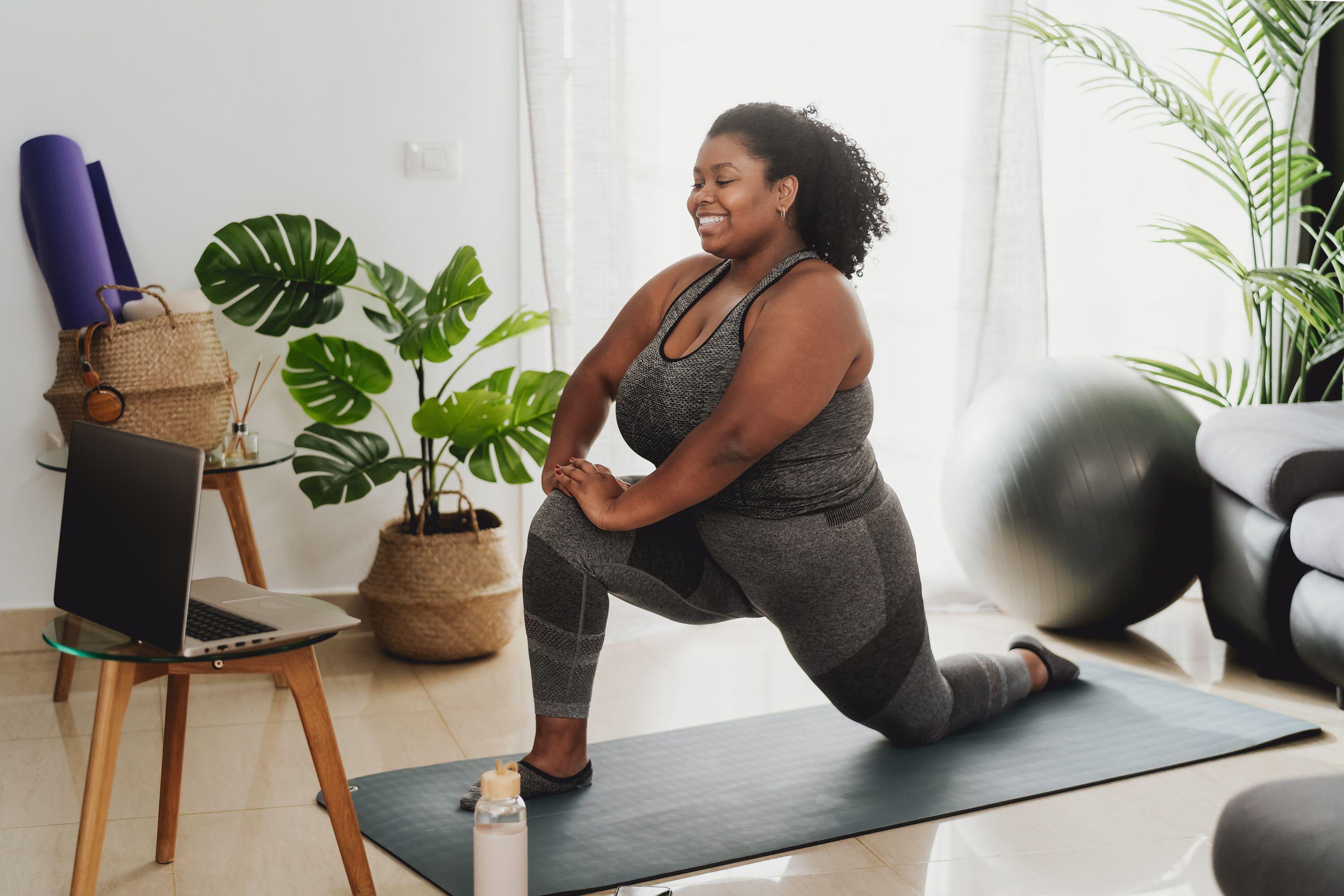To many, strength training is an intimidating term, conjuring up images of muscle-bound bodybuilders and sweat-scented gyms. But as ever-more research reinforces the practice’s many benefits, for those of all ages and fitness levels, a growing number of people are looking to try it out.
If you fall into this camp, calisthenics – a kit-free training method which leverages your own body weight as resistance – is an accessible option you can do from the comfort of your living room. And we have a four-week plan for absolute beginners to help you get started.
“Calisthenics helps people get stronger in more planes of movement, and uses movement patterns that are more relevant to everyday life,” says Dr Athalie Redwood-Brown, a senior lecturer in performance analysis of sport at Nottingham Trent University, who also owns a gym and has founded the FiiT For Life charity.

Read more: Four science-backed ways to make your daily walk even better for your health
Every time you sit in a chair, you’re performing a squat of sorts. Bending down to tie your shoelaces is tantamount to a lunge, and the process of picking yourself up from the floor often starts with a form of press-up. For this reason, Redwood-Brown says calisthenics training can allow people to “live life better”.
“You’re creating all of these lovely neurological pathways which then allow us to do everyday activities better,” she continues. This strengthens the body, leaving it less prone to injury, while also improving balance and coordination. It can also help combat sarcopenia – the age-related loss of strength, muscle and function in the body.
If these attributes sound enticing, read on for a beginner calisthenics programme from Redwood-Brown, as well as her top tips on how to get started.
A four-week beginner calisthenics plan
Perform each of the three workouts below once per week – a schedule placing day one on a Monday, day two on a Wednesday and day three on a Friday often works well. Repeat this cycle for four weeks in total, using the progression options below to gradually increase the difficulty of the workouts week-on-week.
Redwood-Brown adds that working with an experienced trainer is the best way to get started, but this is a good system for beginners to introduce their body to regular movement and lay solid foundations of strength and mobility.
If you already have some training experience, you might want to consider introducing weights into your workouts for an added challenge with this experienced strength coach’s weekly workouts.
Read more: I spoke to the man who wrote the book on fermentation – here is his golden rule for gut health
Day one
|
Exercise |
Sets |
Reps |
Rest between sets |
|
Incline press-up (against a wall, countertop or desk) |
3 |
10 |
60 seconds |
|
Forearm plank (drop the knees to the floor to reduce the intensity) |
3 |
20 seconds |
60 seconds |
|
Glute bridge (hold for a few seconds at the top to increase the difficulty) |
3 |
15 |
60 seconds |
|
Seated arm circles (extend your arms parallel to the ground and make small circles with your hands) |
2 |
30 seconds |
60 seconds |
Day two
|
Exercise |
Sets |
Reps |
Rest between sets |
|
Chair squat (sit in a chair in a controlled manner, then stand back up) |
3 |
12 |
60 seconds |
|
Standing calf raise (come on to your toes, then lower your heels back to the floor) |
3 |
15 |
60 seconds |
|
Standing hip circles |
2 |
10 in each direction |
60 seconds |
|
Forward fold with arm swings (hinge at the hips to let your arms hang towards the floor, then sway them gently from side to side – only lower as far as you feel comfortable) |
1 |
60 seconds |
60 seconds |
Day three
|
Exercise |
Sets |
Reps |
Rest between sets |
|
Marching in place (high knees optional) |
1 |
60 seconds |
60 seconds |
|
Wall sit (place your back against a wall and slide your hips down as far as is comfortable – the lower your hips, up to 90 degrees, the more challenging the exercise) |
3 |
20 seconds |
60 seconds |
|
Side lunge (assume a wide stance, shift your weight to one side while bending that knee, then return to standing – hold a chair for support if needed ) |
3 |
6 each side |
60 seconds |
|
Bird dog (start on all fours, extend your right arm and left leg until they are parallel with the floor, return to all fours, then repeat on the other side) |
3 |
10 in total |
60 seconds |
The body reacts to better handle the challenges we consistently set it, so calisthenics can make our body function better both internally and externally; think improved heart health, lower risk of chronic diseases, more robust joints and increased physical capacity.
However, this also means that if you want to see continued positive adaptations from exercise, you need to progress the difficulty of your workouts over time in line with your increasing fitness levels. Luckily, Redwood-Brown’s instructions cover this.

“To keep improving, you can use simple tweaks,” she says. “Each week, you can increase the reps by two or three for each exercise, or add one extra set per move – for example, doing four sets of incline press-ups rather than three.
“You can also increase the amount of time you hold the planks and wall-sits by five to 10 seconds each week.”
The final option is to increase the resistance. For the incline press-ups, this can be achieved by lowering your hands from a wall to a kitchen counter to a table or bench – the lower the hands, the more challenging the exercise.
You can also add light resistance bands, or even use tins of beans as makeshift dumbbells, to make exercises such as the glute bridges, squats and side lunges more challenging.

How to get the most out of calisthenics training
The term calisthenics stems from the ancient Greek words kallos, meaning beauty, and sthenos, meaning strength. The name roughly means “beautiful strength”, and for the practice to be successful, there has to be an emphasis on moving well.
“The fundamental [of strength training] is to move well,” Redwood-Brown says. “Then you can move well with load, and then you can move well with load faster.”
To practise this, she recommends considering the quality of your movements in everyday life.
“When you sit down on the sofa, I want you to think about how you move,” says Redwood-Brown. “Imagine you have a £50 note between your bum cheeks [and squeeze them], because that means you sit up taller, you engage your core a little bit more and you use your bum muscles a little bit more.
“For a lot of people, they don’t want to go to a gym until they feel that they can actually move with confidence. All of these [calisthenics] movements are fundamentals.”
Alongside moving well, the other most important factor for seeing results from your calisthenics workouts is consistency.
“People think it needs to be super hard from the start and they need to go from zero to 100 immediately,” says Redwood-Brown. “But if you make small progressions, you’ll see progress. It’s not about who finishes the first week fastest, it’s about consistency; showing up and doing it even when you don’t want to.”
This isn’t to say the workouts shouldn’t feel challenging. As mentioned above, the body responds to physical stress by adapting to deal with it better over time – for example, strength training can stimulate muscle growth, improvements in mobility and the strengthening of tissues around joints such as ligaments and tendons.
The important thing is to find a variation of the exercises above that suits your fitness level, allowing you to move well throughout the prescribed repetitions, but still providing a worthy test for your muscles.
“You have to ‘choose your hard’,” says Redwood-Brown. “You might be in a situation now where it’s hard standing up or walking to the end of the road because you’re out of breath, you’re overweight or you’re stiff. That’s not going to suddenly go away.
“We can do something hard now for a little bit, like these workouts, so that in a few months, these everyday tasks feel easier. Or, if we stay where we are, they are always going to be hard.”
Read more: We’ve overcomplicated fitness – these six simple things will make you healthier than most people

Benefits of calisthenics training
We mentioned some of the major benefits of calisthenics training in the introduction, from building full-body strength to developing more resilient joints. But by Redwood-Brown’s reckoning, we barely touched the sides.
“With exercise, and specifically calisthenics, you’re actually using your own body to become resilient against things like sarcopenia, osteoporosis and rheumatoid arthritis,” she says. “We’re going to improve our general health, cardiac health, lung function, mobility and posture. There’s so much positivity to it, and you are just using your own body weight”
Read more: Eat these two foods weekly to improve gut health and reduce tummy troubles, nutrition expert says
Source link

